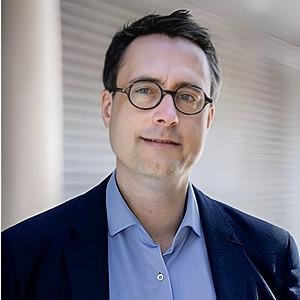Research Digest Overcoming organizational inertia when a paradigm change is necessary
In “Opportunity/Threat Perception and Inertia in Response to Discontinuous Change: Replicating and Extending Gilbert (2005)”, published in the Journal of Management, Lorenz Graf-Vlachy and his co-authors analyse the organizational adaptation of companies faced with the kind of change that challenges established paradigms about value creation.
Why study this
Discontinuous change fundamentally challenges assumptions and beliefs; in an economic context it denotes novel ways of creating and capturing value. Such change, like the advent of digital photography or online book retailing, requires that incumbent firms adapt. Yet organizational inertia may prevent them from departing from their traditional, linear innovation trajectory, and thus leave incumbents lagging behind new entrants or competitors that embraced change. It is therefore important to understand organizational barriers to adaptation. While the research of Clark C. Gilbert (2005) on this topic is considered particularly influential, it also has a number of limitations, which this study addresses by replicating his work and then generalizing and extending it to other contexts.
Findings
- Gilbert’s seminal work on adaptation to discontinuous change disentangled two forms of organizational inertia:
- Resource rigidity: the failure to change resource investment patterns in response to discontinuous change.
- Routine rigidity: the failure to change the organizational processes that use resources.
- Also, according to Gilbert, decision-makers’ perception of a discontinuous change as a threat (rather than an opportunity) is both necessary and sufficient for overcoming resource rigidity – but it amplifies routine rigidity. This may be overcome by creating a structurally separate new venture unit in which decision-makers may develop an opportunity perception without having to worry about resource rigidity.
- The researchers’ empirical evidence from case studies in the German book retailing industry and the European mobile telecom industry suggests that opportunity or threat perception cannot explain behaviours coherently if it is understood as a unidimensional continuum.
- Instead, they conceptualize opportunity/threat perception as a construct with two dimensions: gain/loss framing and level of perceived control.
- Only partly in line with Gilbert, their evidence suggests that resource rigidity in response to continuous change relaxes when managers perceive the discontinuity as a potential loss – but only at medium levels of control perception.
- Interestingly, and further contradicting Gilbert, their evidence also suggests that resource rigidity in response to continuous change can relax when managers perceive the discontinuity as a relevant gain, as long as they simultaneously sense control.
- Finally, creating a structurally separate new venture to implement the discontinuous change allows the venture to develop its own identity and a spirit of autonomy and freedom, which in turn creates perceptions of gain and control and thereby fosters experimentation with the new domain.
Decision makers across the [book retailer] Book 2000 organization predominantly perceived online business as a gain, and the company was one of the first and most active players in the German online book-retailing market. (...) Perceptions did not change until (...) Amazon and other large players were rapidly gaining market share. At that time, imminent loss framing emerged alongside a strong sense of having lost control over the development of the online segment.
Key insight
Differences in gain/loss framing and perception of control may explain different responses in incumbent firms’ adaptation to discontinuous change.
Impact
These findings help explain under which conditions, and how promptly, organizations allocate resources to the adaptation to change, and use these resources effectively to advance their business.
Final takeaway
Managers should actively use discourse to shape how members of their organizations perceive discontinuous change and invoke either loss or gain framing to stimulate resource commitment to discontinuous change, while also actively managing perceived control.
Authors
 Andreas König Professor of Strategic Management, Innovation, and Entrepreneurship at the University of Passau
Andreas König Professor of Strategic Management, Innovation, and Entrepreneurship at the University of Passau Lorenz Graf-Vlachy Senior Research Fellow at ESCP Business School, Professor for Strategic Management and Leadership at TU Dortmund University
Lorenz Graf-Vlachy Senior Research Fellow at ESCP Business School, Professor for Strategic Management and Leadership at TU Dortmund UniversityCampuses
![© Who is Danny - AdobeStock [copyright]](/sites/default/files/styles/event_news_une/public/2023-05/WhoisDanny-AdobeStock.jpg)